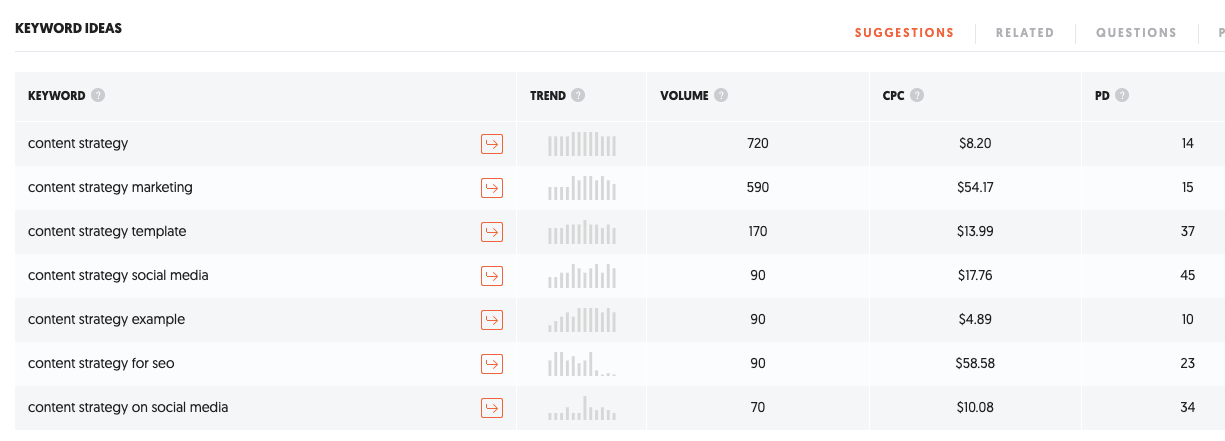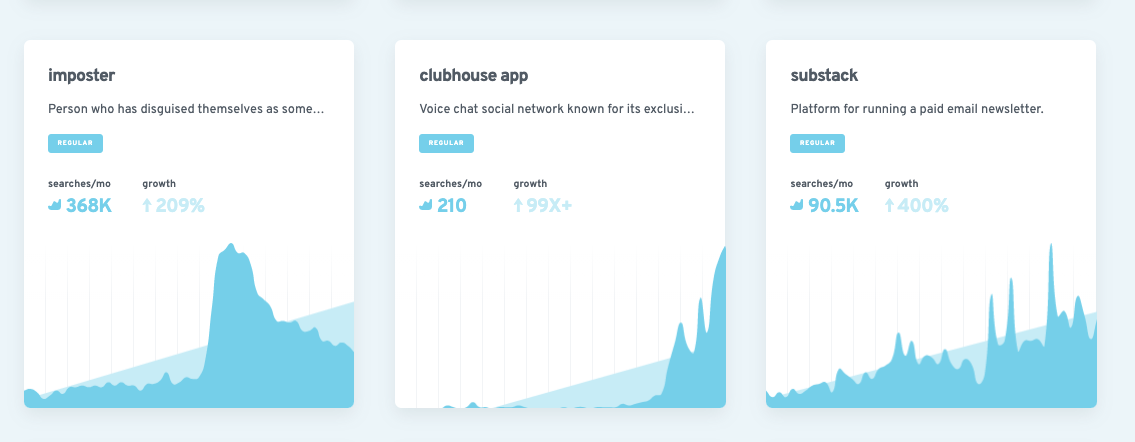How to use SEO content strategy to explode results
Hearing the phrase “Search Engine Optimisation” is enough to make many content strategists run away to hide from the deathly pain of information architecture, keyword research, search volume analysis and writing meta descriptions.
But what if I told you that SEO is NOT the most valuable piece of the content strategy puzzle - it’s the insight into search terms and audience intent that really bring home the bacon for an SEO-led content strategy. Diving down the rabbit hole of SEO research delivers great qualitative information to writers, which adds real value to the effort.
SEO is one of the most ROI-positive investments you can make when it comes to creating content, but it’s about way more than merely choosing the right keywords to drive traffic. Marketers would prefer to believe that keyword tools are all you need to succeed at SEO, but content strategists know that it’s the quality audience insights you gain from SEO research that matter the most.
As Google - and other tech platforms - come under pressure from regulators and governments for everything from online bullying to fake news, quality content from authoritative and trusted sources become a key value signal that those hard-to-understand algorithms want to surface. And that’s why it’s important for quality content creators to understand SEO.
Writing smart, utilitarian content that’s unique enough to bring in organic traffic and then build through links and people wanting to find out more is powerful. Content discovered through search tends to deliver evergreen traffic, month in and month out, building a valuable track record for your domain.
So is audience intent. People browsing Facebook are not looking for you or your content. But if you optimise effectively for SEO, you can catch people as they seek out the valuable content you - or your brand or employer - creates.
How to find good search volume data to make content SEO decisions
Fact 1. You usually need a paid tool to find accurate search volume data. You can also muck around with Google’s keyword tool by opening a Google Ad Account and spending hours of your life setting it up and clicking to get the results.
Here are the free SEO tools to do quality research on search volume data for the territory you are writing for (HINT: don’t forget to switch to Australia or New Zealand as US or UK search volume data is VERY misleading).
The free search volume data tools I suggest include:
Google autosuggest is great to get inside the heads of searchers
Simply go to Google.com and type in your term to see the results Google suggests - the search engine will show you the terms with the highest volumes first as their AI is trying to help you complete the search without having to type more words in. You won’t find out the specific search volume, but you will get an idea of what appears higher than other results and thus assume that the top result has the highest volume.
To get these autosuggest terms, you need to be in Google.com (IE, not a browser search) to see the full list suggested to you. It works better on a desktop than a mobile. You can assume from this that content strategy has higher volumes than content strategist of content strategy template.
Use a freemium SEO tool like SEMRush (this is my favourite tool)
You can get 7 days free access but then you’ll need a paid monthly subscription to get access to the results.
An SEMRush keyword search shows the search volume, keyword difficulty and variations. I offer a free 14-day trial of SEMRush as part of my membership programs, otherwise you need to sign up for your own free trial for 7 days.
Use a freemium SEO tool like Ubersuggest for content strategy
Tools like AHRefs, SEMRush, Moz and Ubersuggest all leverage the Google data and showcase it in slightly different ways. Some of the search volume numbers may vary between tools, but it gives an indication that quality content strategists and writers can use to kick off a smart SEO-led content strategy.
When choosing a primary keyword, high search volume isn’t always king. The more search volume a set of words has, the higher the competition typically is for those words.
Depending on your site’s domain authority (which is also about trust), the competitiveness of the search engine results page (SERP), and the intent relationship between your content and the keyword, your content may or may not rank well.
Instead of going for keywords with high volumes searches per month and ranking on the 8th page of Google results, it’s better to target the longer tail three or four-word key phrases that still have volume, but the potential to rank in position 1,2 or 3 .
That’s because the position-to-traffic relationship is exponential. If you want Australian traffic, look for key phrases with at least 100 local monthly searches a month as a starting point and optimise to that. Make your content as unique and distinctive as possible by checking what else ranks for those terms and being 5000 times better than that listing.
It’s also important to understand the INTENT behind the keywords - what are audiences actually trying to find when they type in a keyword or key phrase? Read on …
Choosing the right keywords to exploit search intent
Search intent is the most overlooked part of SEO research. Put simply, user intent is the vital glue between a query or keyword that someone is searching for and the content that answers it.
There are 3 main types of intent when someone is searching on Google:
Informational: Helps someone find information about a topic they’re interested in (e.g., “Content strategy tips”).
Navigational: Helps someone navigate to a site or product, and may include particular brand names, directions, reviews, etc. (e.g., “Alex Brooks content strategist or Rand Fishkin SEO tips”).
Transactional: Helps the user accomplish something (e.g., “Content strategy templates” -- in this case, people looking to download or purchase templates to help with content strategy).
Understanding search intent is important because even if you write great informational content about a product but the keyword you choose is mostly navigational or transactional, you aren’t likely to rank as high.
The key is to listen to search volume data and use it as an asset to understand what people are looking for. The key to listening to this search volume data comes with another FANTASTIC freemium tool called Answer The Public.
Answer the public mines the Google data to give context around the questions people are typing in and gives
Choosing keywords: understanding competition
To further understand your likelihood to rank for content, use a tool like Ahrefs or SEMRush or Ubersuggest to look at the first few results on that particular keyword. What is that site’s domain authority? How many backlinks and referring domains does that particular page have? The higher these metrics are, the harder it will be to rank.
Not all search volume is equal. Take a look at the results pages and look at the number of backlinks the top results have. Content and terms with thousands of backlinks are harder to displace than those with lower volumes of backlinks.
The BEAUTIFUL thing about SEO research is finding the exploding growth in search demand. A tool called Exploding Topics specialises in this, showing the terms that are exploding in growth - now THAT is audience insight.
SEO research is more important for audience insight than for actual search rankings or content success. Or that’s my view, and I’m sticking to it.





